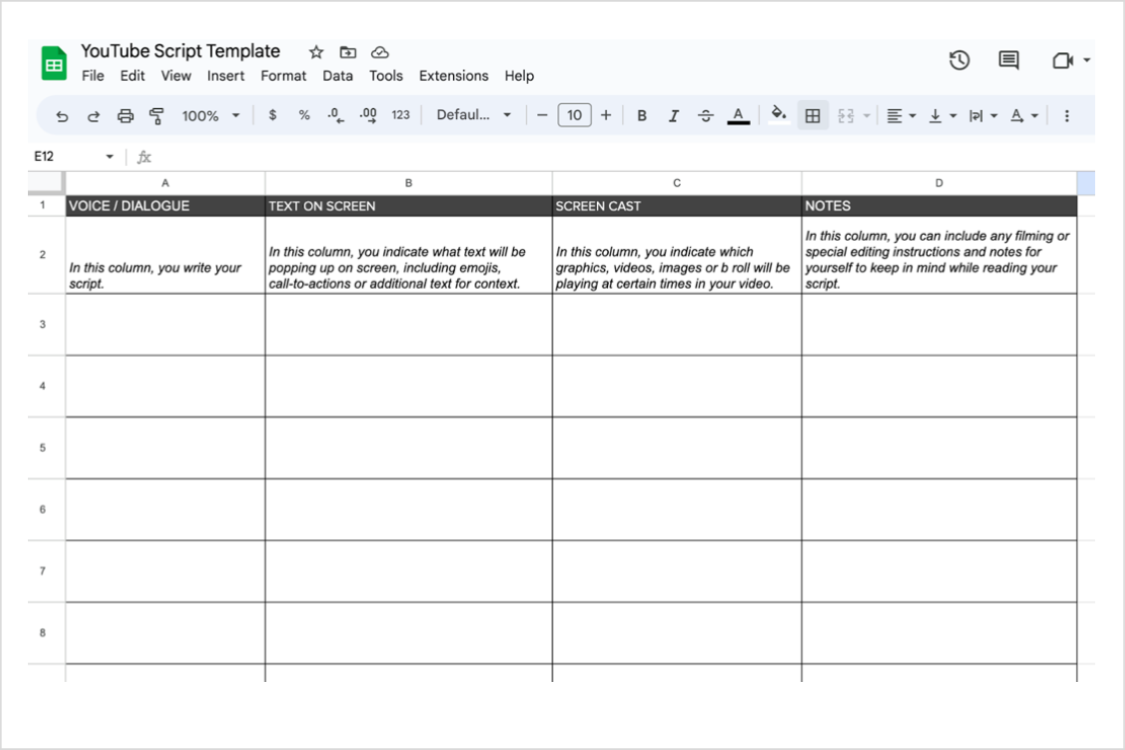ICYMI: YouTube, the world’s second-largest search engine platform, poses a challenge with its overwhelming daily content uploads.
That’s where YouTube scripts come in.
These powerful tools empower you to craft captivating videos that captivate your audience, ensuring your channel stands out from the rest.
Whether you’re a small business owner or a creator, our comprehensive step-by-step guide below will teach you the art of crafting an impactful YouTube script. Discover the techniques to hook viewers, maintain engagement, and attract the attention your channel deserves.
What is a YouTube script?
A YouTube script serves as the essential framework for your video, encompassing specific dialogues, visual cues, and call-to-actions (CTAs). It ensures you stay on-topic while engaging viewers, playing a pivotal role in producing top-notch video content.
The Importance of Writing YouTube Scripts
When it’s time to shoot, distractions can easily derail the filming process, particularly with a multitude of talking points. By utilizing a YouTube script, you maintain focus, hit your cues, and effectively incorporate important CTAs.
Moreover, scripting in advance provides on-screen talent the flexibility to explore multiple takes, perfecting their delivery or adjusting the tone as needed. Additionally, collaborating with a video editor offers greater post-production possibilities.
In essence, YouTube scripts are an indispensable tool for maintaining organization within video production teams.
How to Write a YouTube Script: 5 Easy Steps
Crafting a compelling YouTube script doesn’t require professional writing skills.
Follow these proven five steps:
Step #1: Ready, Set, Brainstorm
Generate a list of 5-10 relevant topics within your niche. Consider FAQs to transform into tutorials, debunk common industry myths, or offer insights on recent changes. Validate topic relevance through keyword research for improved visibility and performance. Choose a topic that genuinely resonates with your brand, not just for its high-ranking keywords.
Step #2: Build Your Outline
Once your topic is selected, create an outline. Divide your video into sections, using similar headlines from blog posts if applicable. Otherwise, follow this formula:
Grab Attention: Engage viewers with questions, pain points, intriguing facts, or personal stories.
Introduction: Present a preview of what the video will cover.
Main Headlines: Break down the topic into easily digestible sections with clear examples and explanations. Incorporate visual elements like pop-up text, screenshots, b-roll, and transitions.
Conclusion: Wrap up the video with a concise and impactful call-to-action (CTA), such as subscribing, following on Instagram, or clicking the link in the description.
By following these steps, you’ll be on your way to crafting an effective YouTube script.
Step #3: Write Your Script
Prior to writing, determine the on-camera speaker, which sets the tone and incorporates their natural conversational style and expertise. When it comes to scriptwriting software, the choice depends on your preference.
We utilize Google Sheets for mapping out YouTube scripts due to its ability to separate each line into individual rows, facilitating the placement of visual elements and CTAs.
Note that teleprompter apps typically require a CSV format for automatic uploading, while CapCut’s in-app teleprompter necessitates manual transcription. Once the format is decided, it’s time to expand on your outline:
Keep It Concise: Provide comprehensive details using minimal words. Introduce what viewers will learn and how you’ll assist them. Avoid excessive rambling and unnecessary filler words in the main points.
TIP: To estimate your video’s duration based on the script’s word count, follow the guideline of 150 words equating to approximately 1 minute of speech.
Step #4: Plan Visuals
During the outline phase, you may have identified where visual elements would be integrated. Now, it’s recommended to finalize those elements and the accompanying text pop-ups within your script-writing template or software (as mentioned in step #3).
Visuals can encompass charts, graphics, GIFs, or screen recordings that enhance the illustration of your points.
Step #5: Edit, Edit, Edit
During this stage, you’ll refine and simplify your YouTube script.
Reading it aloud allows you to gauge the natural flow of the dialogue.
Trust us, any choppiness or excessive complexity will be evident.
Conducting a verbal run-through helps eliminate filler words that prolong the duration.
Lastly, have a colleague review the script for final approval.
And there you have it—the complete guide to writing your next YouTube script.
In a sea of YouTube content, scripting can be your key to crafting valuable material that keeps your audience coming back for more.


